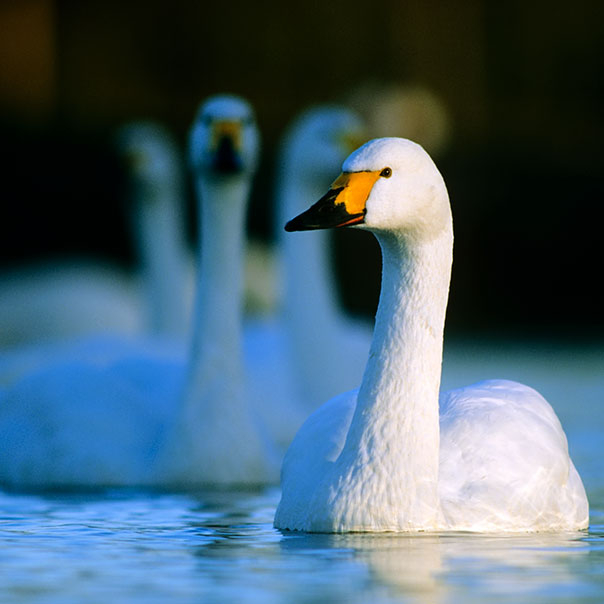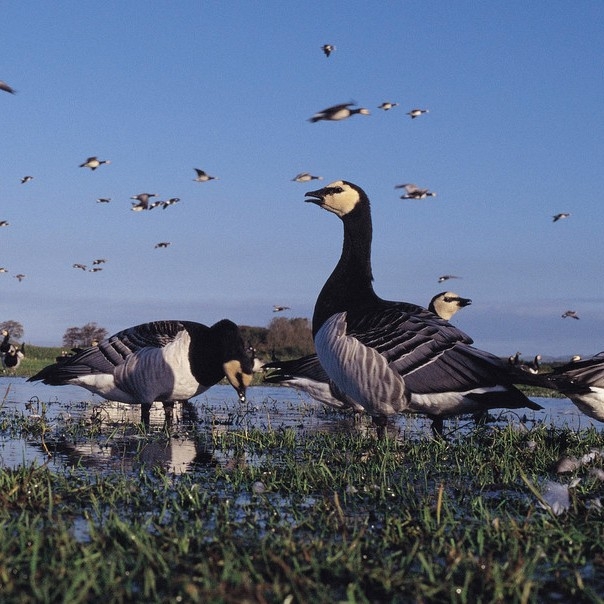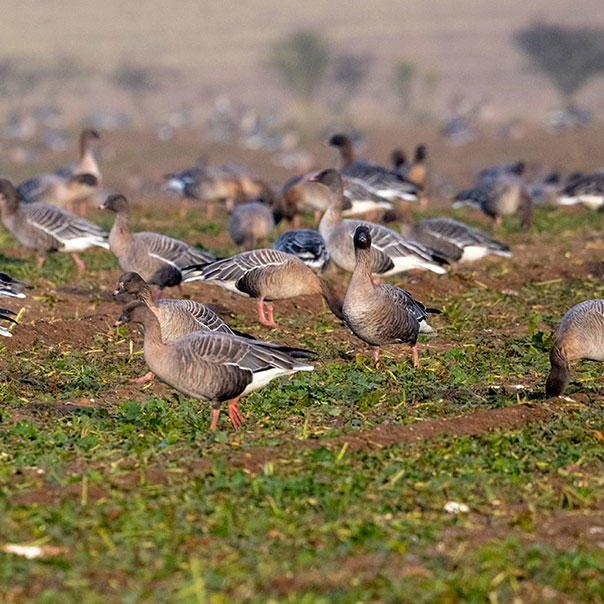Wetland wildlife in October
Autumn is now at its peak with huge numbers of birds making their way to our wetlands to spend the coming winter months in relative warmth.
As well as bird numbers building, it’s time for amphibians to start leaving their summer haunts and find somewhere cosy to spend the winter.
Ducks, geese, swans and waders are all making the perilous journey from their summer breeding grounds. Earlier in the autumn, we saw birds mostly stopping off to rest and refuel at our wetlands before continuing their migration, but now they begin to settle in for the winter.
New arrivals
Waders have been coming and going since early August, but this month we start to see more of them staying put, including species such as golden plover, knot, lapwing, godwit, redshank, grey plover and curlew. These birds will quickly get to work fattening up for the winter months, using their specialised bills to feed on a variety of prey below the surface of the water and in the mud.
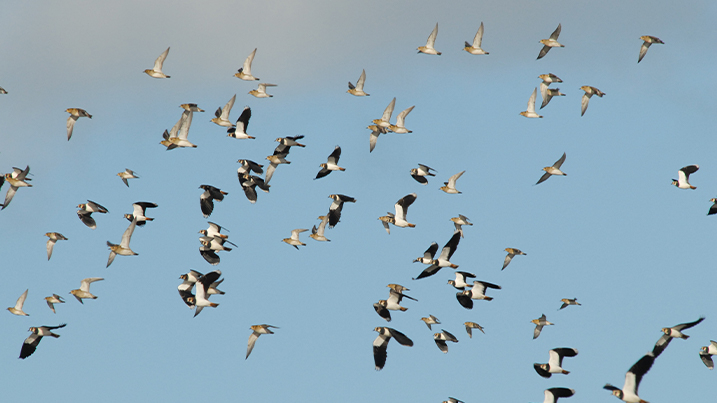
Since mid-September, pink-footed geese have been incoming from their Icelandic breeding grounds. The biggest numbers of these birds can be seen at WWT Martin Mere and Caerlaverock; numbers peak in October with some flocks moving off to winter at other sites. Barnacle geese from Svalbard, off the coast of arctic Norway, arrive to winter on the Solway Firth using WWT Caerlaverock as a key site (see header image). Over at WWT Castle Espie, light-bellied brent geese are now busily feeding up on eelgrass.
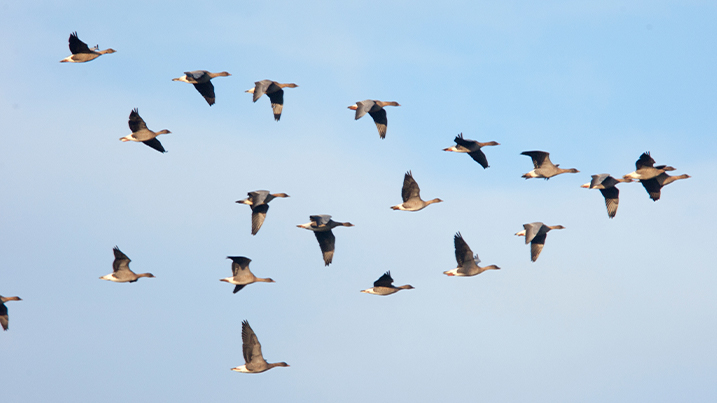
As well as geese, we’ll see duck numbers increasing this month. Primarily from Scandinavia and Russia, we will see wigeon, pintail, mallard, pochard, shoveler and teal arrive as they escape the cold of the continent.
And of course, the swans are arriving. Whooper swans will be incoming to WWT Caerlaverock, Martin Mere and Welney from breeding grounds in Iceland. At Welney and the surrounding Ouse Washes, around 12,500 whooper swans spend the winter, representing 25% of the population. 10% winter in Northern Ireland, some of which can be seen at WWT Castle Espie. Towards the end of the month, Bewick’s swans will begin to arrive from their breeding grounds on the Russian tundra. They’re long-distance migrants, travelling thousands of miles to western Europe every winter and can be seen at WWT Welney and Slimbridge.
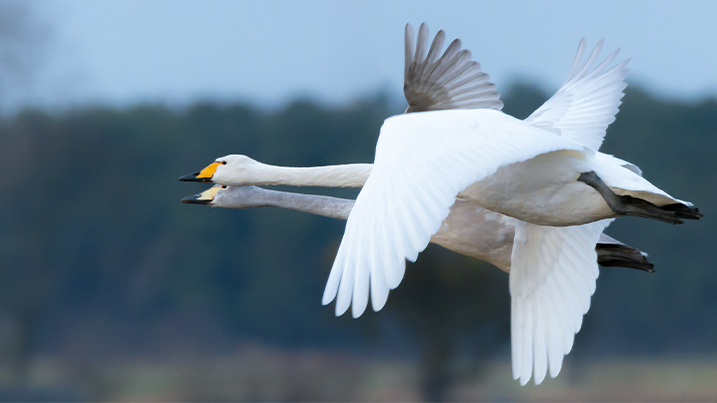
Slippery characters
In our gardens, amphibians (and their predators, grass snakes) will be feeding up before hibernation and thinking about leaving their ponds in order to settle in to their winter homes. Whilst in the deeps of our wetlands, adult eels, now dark grey in colour, will use stormy, wet nights to head out to saltwater and ultimately to the Sargasso sea, on the other side of the Atlantic, to breed. It’s best to leave a freshwater wetland when it’s dark as there aren’t too many predators about; the eels also use high water levels to assist their departure.
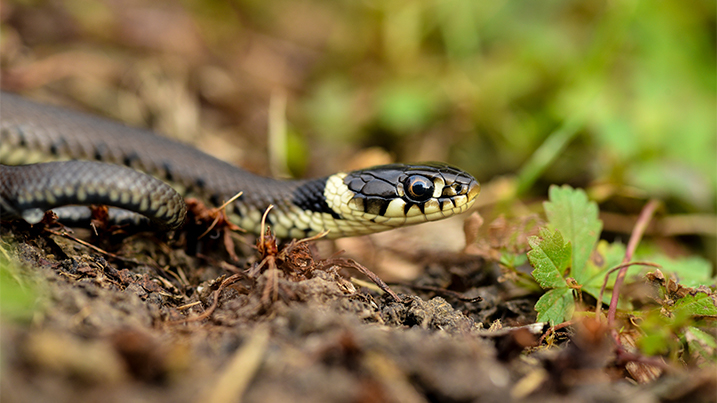
The last dragons
In a warm October, you’ve still got a good chance of viewing dragonflies, such as late migrant hawkers, on the wing, with common and ruddy darters still present too. In fact, there is a chance of seeing these species still ovipositing (egg laying) into November.
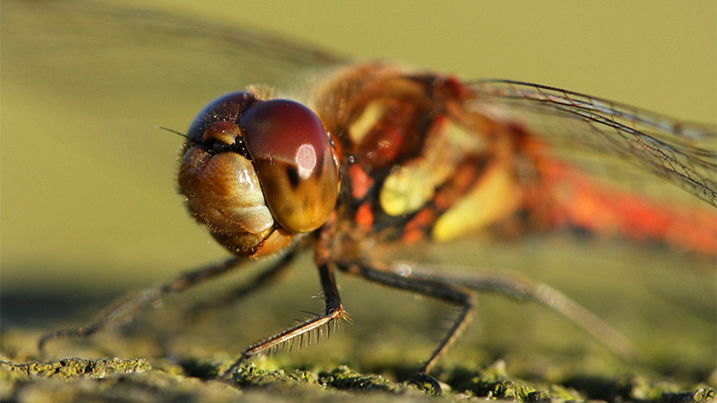
Where to see October wildlife
You’ve got a good chance of seeing wintering waders at any wetland across the UK. They’ll be drawn to any wet, muddy area where they can feed and safely roost. This is true too of the wintering ducks, but of course they’re also likely to be seen out on open water.
Common darter dragonfly is common across the UK, whereas the ruddy darter and migrant hawker can be seen throughout much of England and Wales but get rarer the further north you go.
Find your nearest WWT wetland siteNovember
Next time, we’ll be into November and winter will be beginning to take a hold. Birds will continue to trickle in and we’ll start to see numbers of Bewick’s swan increase.
Wetland wildlife in NovemberSupport from players of People's Postcode Lottery helps us care for our reserves and protect amazing wetland wildlife.

